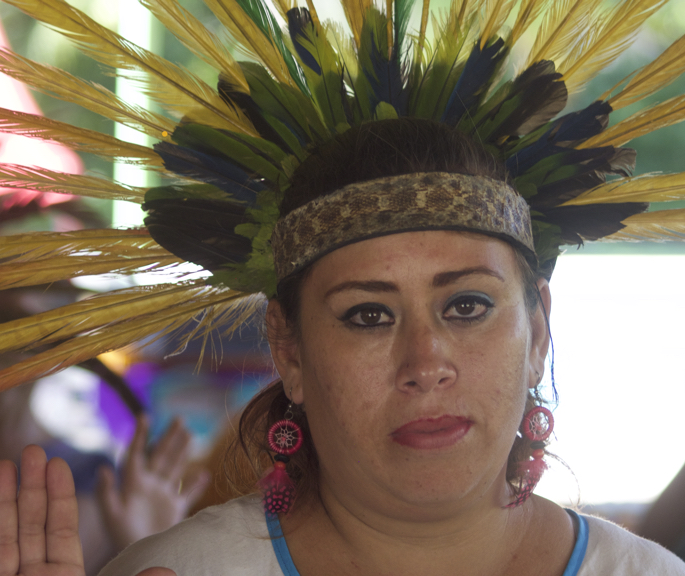By Dan and Lisa Goy from the November 2016 Edition
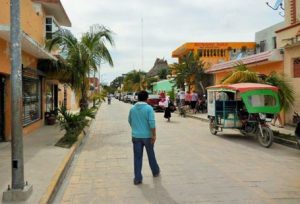
After spending 3 days in Mérida, we ventured off to Celestún, (which means “painted stone”). Though not on the original tour itinerary, it became clear we could not pass up the opportunity to make this stop. The draw was the flamingos and, as we learned later, there was much more to see. The town of Celestún is in the northwest corner of the state, just north of the border with the state of Campeche, on the Gulf of Mexico coast.
In 2000, it had a population of just under 6,000 people; how-ever, the population swells to 10,000 during the octopus hunting season. This is mostly a fishing town, with a 19th-century lighthouse (as well as a more modern one) and an abandoned historic hacienda and, besides fishing, Celestún also produces salt, as it has done from pre-Columbian times. As was evident with our arrival, tourism is also making up an increasing portion of the town’s economy, as the community has many kilometers of sand beaches and abundant wildlife.
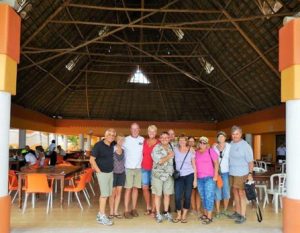
There are no camping facilities in or around the town, so we simply parked at the public dock parking area at no charge. This is where we also booked a tour of the vast estuary for the following morning. We walked into town a short distance away, had lunch at a seaside restaurant, walked on the beach and strolled thru a couple of markets.
After heading back to the RVs, we had a Happy Hour before retiring for the evening, looking forward to our tour the next morning. We were up early and met our guides at the docks as scheduled for 8:30 am. Our group was divided into 2 boats of 6 with a guide.
Daniel operated the boat we were in, a very pleasant young man in his 20s that spoke little English which was not a problem given Rafael, on our boat, is Spanish by birth.
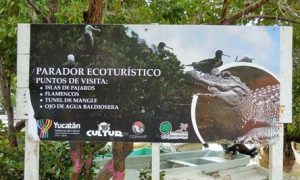 This is what we came to see as surrounding the town is the 147,500-acre (600 km²) Parque Natural del Flamenco Mexicano (also known as the “Celestún Biosphere Reserve”), a wetland reserve that is the winter home to vast flocks of flamingos, as well as many herons and other bird species. This location is set within the Petenes mangroves ecoregion. In addition, more than 200 species of birds pass through on migration or live there. Celestún’s ecosystem is unique because of a combination of fresh water from the estuary and salt water from Gulf of Mexico.
This is what we came to see as surrounding the town is the 147,500-acre (600 km²) Parque Natural del Flamenco Mexicano (also known as the “Celestún Biosphere Reserve”), a wetland reserve that is the winter home to vast flocks of flamingos, as well as many herons and other bird species. This location is set within the Petenes mangroves ecoregion. In addition, more than 200 species of birds pass through on migration or live there. Celestún’s ecosystem is unique because of a combination of fresh water from the estuary and salt water from Gulf of Mexico.
The reserve also has two types of pelicans large white Canadian and smaller gray Mexican ones. Celestún 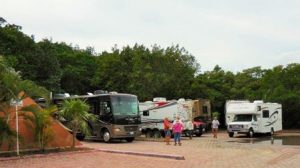 is also known as a hatching ground for endangered sea turtles. Wildlife conservationists have an ongoing project to protect the sea turtles from encroaching modernization. The boat tour took about 4 hours and was a real highlight to our 90 day Mexico mainland tour. The flamingos were fabulous as was the mangrove forest and we saw so many birds, some very rare. If you are ever in the area, make sure you make arrangements to visit Celestún.
is also known as a hatching ground for endangered sea turtles. Wildlife conservationists have an ongoing project to protect the sea turtles from encroaching modernization. The boat tour took about 4 hours and was a real highlight to our 90 day Mexico mainland tour. The flamingos were fabulous as was the mangrove forest and we saw so many birds, some very rare. If you are ever in the area, make sure you make arrangements to visit Celestún.
Celestún Biosphere Reserve Facts
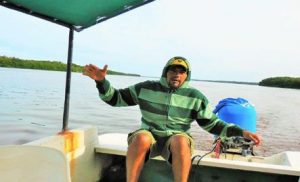
Location: 56 miles west of Mérida, Yucatán (route 281) and/or 134 miles to the north of Campeche, Campeche (route 180) to-wards the western tip of the Yucatán Peninsula in the Gulf of Mexico.
Size: 59,130 hectares (146,000 acres) shared by two states:
25,000 hectares belong to the state of Yucatán (Municipio de Celestún) and the rest, 34,130 hectares, to Campeche (Municipio de Calkin).
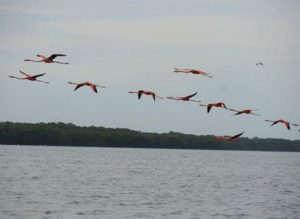 Status: On July 19th, 1979, the Federal Government decreed the Celestún Wildlife Refuge. Because of its importance as the main feeding area for the American Flamingo, and countless species of waterfowl and shorebirds, its status was upgraded to that of a Special Biosphere Reserve in 1989. The Special Biosphere Reserves are representative zones of one or more ecosystems that haven’t been altered by humankind. These areas are the habitat to endemic, and/or species, threatened with extinction. Today, Mexico has 44 National Parks, 13 Special Biosphere Reserves, 16 Biosphere Reserves, 8 Protected Areas, 3 Natural Monuments and 2 Marine Parks.
Status: On July 19th, 1979, the Federal Government decreed the Celestún Wildlife Refuge. Because of its importance as the main feeding area for the American Flamingo, and countless species of waterfowl and shorebirds, its status was upgraded to that of a Special Biosphere Reserve in 1989. The Special Biosphere Reserves are representative zones of one or more ecosystems that haven’t been altered by humankind. These areas are the habitat to endemic, and/or species, threatened with extinction. Today, Mexico has 44 National Parks, 13 Special Biosphere Reserves, 16 Biosphere Reserves, 8 Protected Areas, 3 Natural Monuments and 2 Marine Parks.
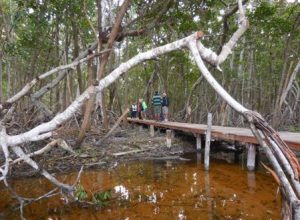
Climate: Warm and semi arid. The annual mean temperature is 26.5 °C, with May being the hottest month with 29 °C on aver-age, and the coolest, January with 23 °C. The annual precipitation goes up to 777 mm. The highest monthly average rainfall is in September with 166 mm and the lowest in March with 5.2 mm. More than 80% of the precipitation occurs during the months of June to September.
Habitat
Coastal dune scrub (11%): You can distinguish two big groups of vegetation in this zone: 1) the coastal or haliphilous dune vegetation that grows near the beach and is tolerant to extreme conditions such as high salinity, strong winds and tides, and 2) the spiny thicket that is less tolerant to sudden environmental changes and thus grows inland. In Celestún, you can find an interesting mixture of tropical savanna, low tropical subdeciduous forest and tular vegetation and find exotic species of palm trees, cactus, bromelias and orchids.
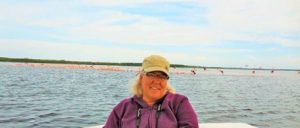
Estuary (9%): The “Ria Celestún”, as the estuary is locally called, is 22.5 km long and has an average width of 1.25 km. It dis-plays an exceptional landscape created by the unusual combination of natural resources, flora and fauna that constitute an ecosystem representative of the dry tropics. Itsshape is rectangular and stretches out from northeast to southwest. The com-munication with the Gulf of Mexico is through a narrow mouth, 0.46 km. wide, in the farthest southern part of the lagoon.
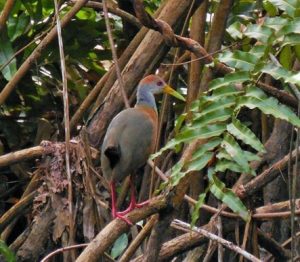
Mangrove forest (59%): These mangrove swamps are among the most productive ecosystems on earth. The mangroves are highly efficient converters of sunlight into organic material. This material, in turn, feeds countless invertebrates, which are themselves consumed by numerous fish, bird and mammal species.
Mangroves are resistant to salt water, and thus prosper where other plants cannot. They are also uniquely adapted to anaerobic (oxygen poor) soil conditions. The black mangrove (Avicennia germinans) sends up straw-like shoots that bring oxygen to its roots; the red mangrove (Rhizophora mangle) has similar “breathing holes” in its arching, aerial roots.
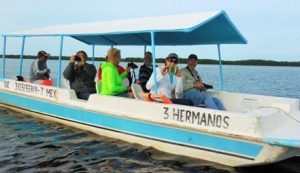
Petenes or “hummocks” (2%): Ecosystems by themselves, hum-mocks are “islands of vegetation”, endemic only in three parts of the world: the Yucatán Peninsula, Cuba and southern Florida. The life of these ecosystems turns around a cenote or sweet water spring. They are home to many species of wildlife and its main characteristic is the presence of precious hardwood like Chicle (Manilcara zapota), Chaca (Bursera simaruba), Tulipán (Malvaviscus arboreus), Cedar (Ficus tecolutensis) Anona (Annona glabra) and Sabal (Sabal yapa), among others, that can grow 25 meters high or more. The fact that they only exist in three relatively-small regions of the world awards them an extraordinary value that justifies the demands of guarantied conservation.
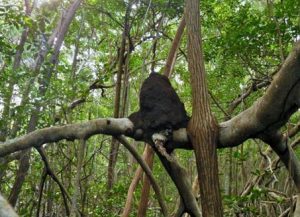
Marshes (5%): The reed marshes of Ria Celestún are an important haven, breeding, and feeding grounds for a wide variety of fish, mollusks and crustaceans, which are the basis of fishing, one of the principal productive activities in the area. Some key species for trading purposes are shrimp (Farfantepenaeus spp.), octopus (Octopus maya), blue crab (Callinectes sapidus), Mayan cichlids (Cichlasoma urophthalmus), catfish (Arius melanopus) and mullets (Mugil spp.). Species such as sea bass (Epeniphelus morio), durophagous stone crab (Menipe mercenaria) and oct-pus (Octopus maya) are being over-extracted through the use of non-regulatory equipment and failure to follow established fishing bans (Gío 1996).
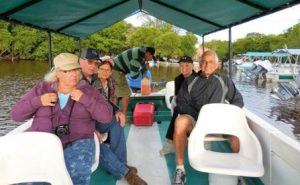
Wildlife: Main wintering area for greater flamingos, nesting beaches for endangered sea turtles, endemic plants and birds in coastal dune scrubs; estuary “nurseries” for countless fish and marine species; highly productive mangrove communities; two endangered crocodile species; migrant and wintering waterbirds, shorebirds and songbirds.
Birds: Over 300 bird species can be found in Celestún’s Special Biosphere Reserve: cardinals, orioles, motmots, woodpeckers, hummingbirds, flycatchers, kingfishers, cormorants, magnificent frigate birds, herons, egrets, white ibises, wood storks, ospreys, hawks, vultures, sandpipers, roadrunners, owls, pelicans, etc.
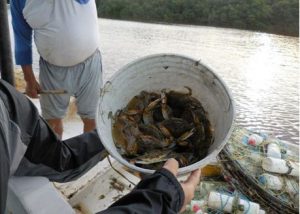
There are some endemic birds such as the Yucatán Wren, the Blackthroated Bobwhite and the Mexican Sheartail Hummingbird. Celestún is considered the fourth largest wintering ground
for ducks in the Gulf region. In winter, you’re likely to observe over 13 migrant duck species. But surely the most popular bird and the most sought after is the Pink Flamingo (Phoenicopterus ruber).
Flamingos: This is one of the most graceful and spectacular birds, but also one that depends on a fragile ecosystem – 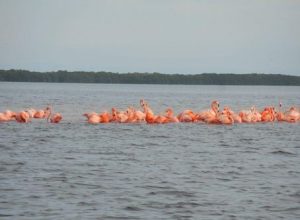 hypersaline lagoons – for survival. The Northern Hemisphere’s only mainland flamingo population lives along the North and West Coast of the Yucatan Peninsula. The flamingo feeds and nests in flocks of several thousand birds huddled together in knee deep water or wading along muddy salt flats. It feeds on small organisms that it filters from the water through a complex mechanism in its large, specially adapted bill.
hypersaline lagoons – for survival. The Northern Hemisphere’s only mainland flamingo population lives along the North and West Coast of the Yucatan Peninsula. The flamingo feeds and nests in flocks of several thousand birds huddled together in knee deep water or wading along muddy salt flats. It feeds on small organisms that it filters from the water through a complex mechanism in its large, specially adapted bill.
Reptiles
Turtles: From the 8 species surviving in the world, 7 exist in Mexico and 4 nest in the coasts of the Yucatan Peninsula: Green Turtle (Chelonia Midas), Loggerhead Turtle (Caretta caretta), Hawksbill Turtle (Eretmochelys imbricata) and Leather back Turtle (Dermochelys coriacea). They spend their whole life in the water except for the brief moments the females come onto land to nest and lay their eggs. A female sea turtle arrives offshore at her nesting beach at night in the months of April, May, June or July. She might nest two or four times during a single nesting season. Though she is fast and well suited to the water, she is slow, awkward and in danger on land. She drops about one hundred white eggs that look like Ping-Pong balls into a hole that she previously scooped out using her back flippers. When she finishes, she covers the nest with sand and slowly lumbers back to the sea. The eggs are ready to hatch about two months later.
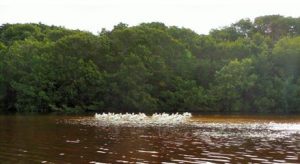
Unfortunately all eight species are endangered or threatened. They are killed for meat and leather; their eggs are taken for food and aphrodisiacs. Their nesting sites go for development. They are ground up by dredges, run over by pleasure boats, poisoned by pollution, strangled by trash and drowned by fishline and net.
Crocodiles: There are two crocodile species in Mexico, the American crocodile (Crocodylus acutus) and the Moreleti crocodile (Crocodylus moreleti). The latter is found in the Celestúnestuary. Despite their armor, which protects them from most predators, all crocodilians are threatened with extinction. Hunting of their skins for luxury leathers and destruction of their habitat have made humans responsible for their precarious situation.
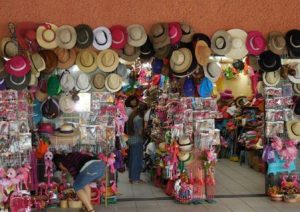
The order Crocodylia includes 3 families of the largest reptiles living today. They are a living vestige of a group called archosaurus of the Mesozoic Era, 225 – 65 million years ago. Their most characteristic features are internal. Despite their ancient history, they are the most advanced reptiles, having an enlarged brain and cerebral cortex indicating their increased ability to learn.
Other important reptiles can be found in the region such as land turtles, boa constrictors, iguanas and geckos.
Download the full edition or view it online
Dan and Lisa Goy, owners of Baja Amigos RV Caravan Tours, have been making Mexico their second home for more than 30 years and love to introduce Mexico to newcomers.




